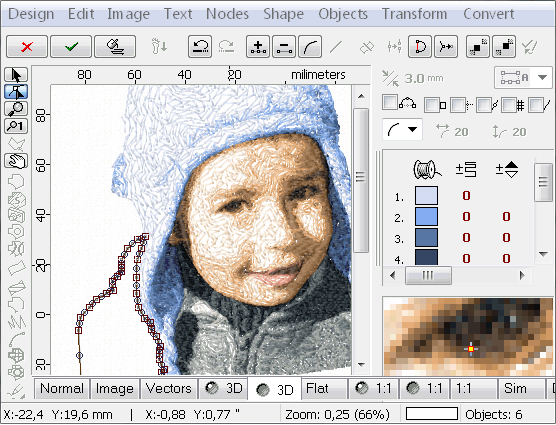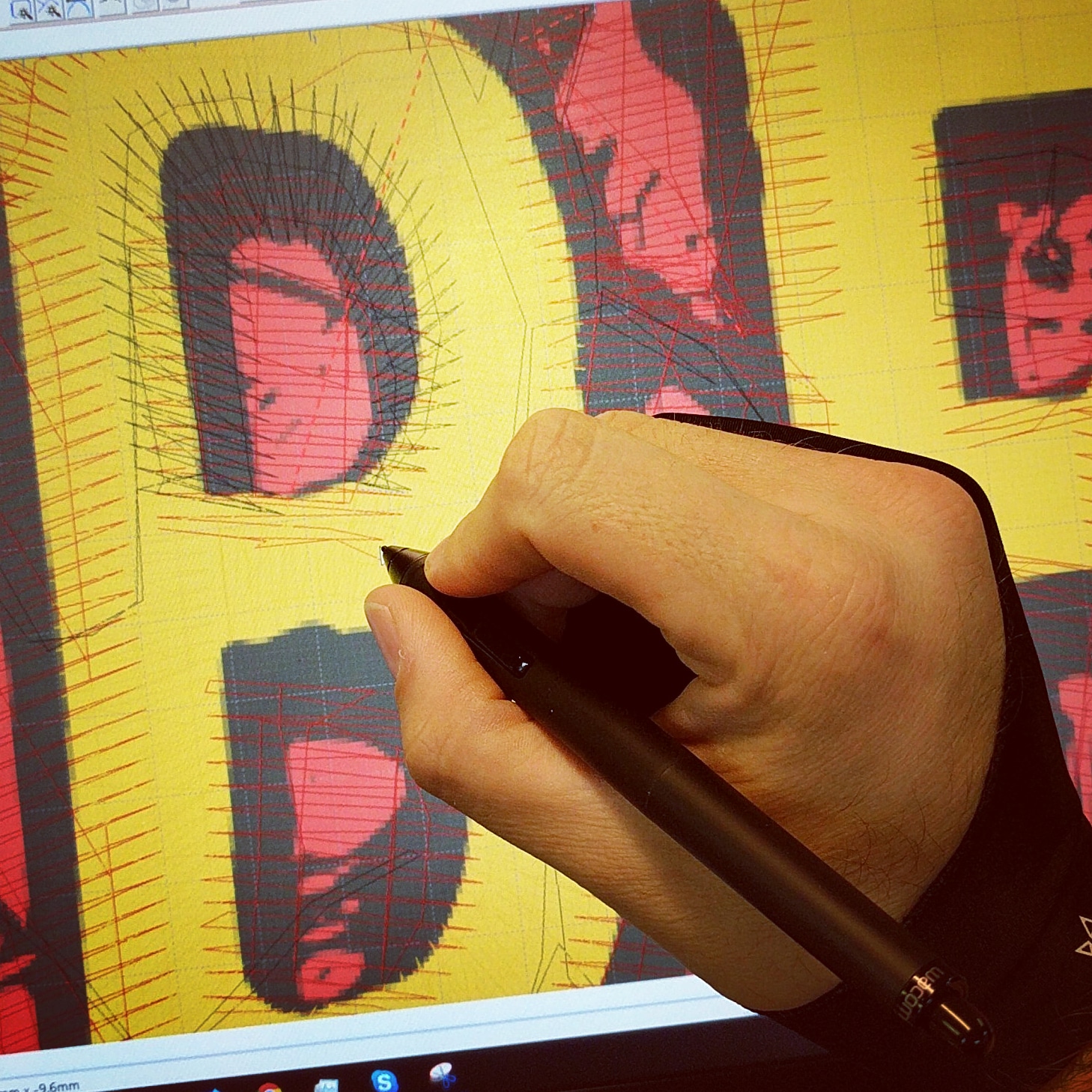Expert Digitizing for Embroidery: Fast and Reliable Solution
Expert Digitizing for Embroidery: Fast and Reliable Solution
Blog Article
Streamlining the Art of Embroidery Digitizing: Step-by-Step Guide
Needlework digitizing is a thorough craft that demands accuracy and creativity. As modern technology continues to development, the digitization procedure has actually come to be more available, permitting enthusiasts to bring their complex layouts to life easily. In this overview, we will unravel the intricacies of embroidery digitizing, breaking down each step methodically to simplify the process and encourage both newbies and experienced embroiderers alike. Stay tuned to discover exactly how you can streamline this detailed art kind and transform your imaginative visions into perfectly embroidered masterpieces.
Understanding Embroidery Digitizing Software Application
Embroidery digitizing software works as a crucial device for transforming elaborate designs right into digital formats compatible with embroidery devices, assisting in precise sewing and modification. This specialized software application allows users to import various image file formats, such as JPG or PNG, and convert them into embroidery machine-readable layouts like DST, EXP, or PES - Digitizing for Embroidery. By making use of features like stitch modifying, padding alternatives, and thread color choice, digitizing software program enables customers to regulate every element of the design procedure
Additionally, advanced embroidery digitizing software application supplies tools for creating complicated designs, changing stitch density, and incorporating complex information. Users can additionally sneak peek the style prior to sewing it out, making certain precision and reducing mistakes. Additionally, numerous software application supply automatic features that help enhance the digitizing procedure, saving effort and time.
Recognizing the capacities of embroidery digitizing software program is important for accomplishing high-grade cause embroidery tasks. By understanding this tool, embroidery lovers and experts can release their creative thinking and bring elaborate layouts to life with accuracy and efficiency.

Selecting the Right Style File
After acquainting yourself with the capabilities of embroidery digitizing software, the next essential action in the procedure is choosing the right style apply for your project. Digitizing for Embroidery. When selecting a design declare embroidery digitizing, it's important to consider the intricacy of the layout, the dimension of the final product, and the sort of material you will be collaborating with
For detailed layouts with fine details, a high-resolution picture or vector file is suggested to ensure that the embroidery equipment can accurately reproduce the layout. Additionally, the size of the final item plays a significant role in picking the right layout data. Bigger layouts may need higher resolution data to preserve clarity and sharpness.
Moreover, the kind of material you will certainly be embroidering on affects the choice of style file. Various textiles might call for modifications in the layout file to ensure that the stitches are correctly lined up and the layout looks like intended. By carefully picking the ideal layout documents based on these aspects, you can set on your own up for a successful embroidery digitizing procedure.
Digitizing Tools and Strategies
Utilizing specialized software program and accuracy strategies, digitizing tools are necessary in changing intricate layouts right into embroidery-ready documents. Needlework digitizing software program, such as Wilcom, Hatch, or Embrilliance, provides the necessary system to transform art work right into stitch information. These advice programs provide functions like stitch editing and enhancing, rug choices, and lettering tools to guarantee the design converts effortlessly onto textile.
Among the crucial techniques in digitizing is developing a clear course for the needlework equipment to adhere to. This involves digitizing each aspect of the style with accuracy, establishing stitch kinds, thickness, and instructions. By utilizing devices like digitizing tablets or software-specific plugins, embroiderers can attain a high degree of accuracy in their digitized designs.
Furthermore, mastering the art of padding sewing is critical for creating high quality needlework. Underlay sewing supports the fabric and develops a structure for the style, making sure that the end product is both aesthetically appealing and durable. By comprehending these digitizing devices and methods, embroiderers can boost their craft and bring intricate layouts to life with precision and performance.
Personalizing Stitch Kinds and Instructions
Having developed a foundation in digitizing tools and techniques, an important element in advancing embroidery craftsmanship lies in customizing stitch types and directions with accuracy and objective. The option of stitch kinds can considerably influence the general look and structure of the embroidered design. Satin stitches, understood for their smooth and shiny coating, work well for developing borders and text. On the other hand, fill stitches are excellent for covering bigger locations successfully. By purposefully incorporating these stitch types, embroiderers can accomplish depth and measurement in their designs.
Furthermore, the direction of stitches plays an essential duty in enhancing the aesthetic allure of the final needlework. Varying stitch instructions can add structure, highlight details elements, and produce aesthetic rate of interest. For example, transforming the angle of stitches can simulate activity or all-natural patterns like hair or feathers. By trying out various stitch angles and patterns, embroiderers can bring their styles to life with amazing information and details. Mastering the art of tailoring stitch types and instructions encourages embroiderers to unleash their imagination and raise the top quality of their work.
Testing and Refining Your Digitized Style
To guarantee the accuracy and top quality of your digitized design, complete screening and refinement are crucial action in the needlework digitizing procedure. Once you have finished the digitization of your design, it is vital to check it prior to proceeding with the actual embroidery. Evaluating allows you to identify any type of possible concerns such as thread breaks, stitch thickness problems, or style distortions that may affect the last outcome.

After screening, it is very important to improve your digitized design based on the responses from the test sew-out. This might involve tweaking stitch setups, changing densities, or making modifications to the general try these out design to accomplish the wanted end result. By repeating with testing and improvement, you can adjust your digitized design to excellence prior to moving on with the actual needlework procedure.
Verdict
To conclude, understanding the art of needlework digitizing calls for a detailed understanding of the software program, selecting the appropriate design file, utilizing digitizing devices and methods, tailoring stitch types and directions, and testing and improving the digitized style. By complying with these actions, embroiderers can simplify the digitizing procedure and create premium embroidered layouts with accuracy and efficiency.
Report this page